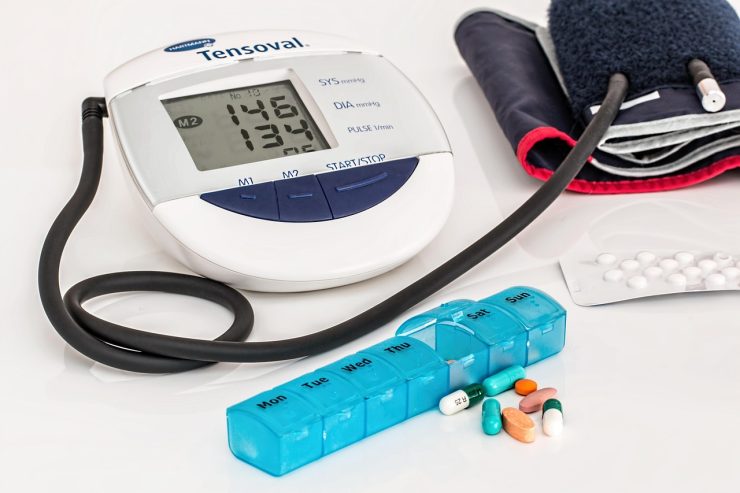Let’s talk hormones for a minute—specifically what’s really going on during perimenopause and menopause.
For years, the conventional medical view has been that all those frustrating symptoms women experience—hot flashes, mood swings, night sweats—are caused by a drop in estrogen as the ovaries start to slow down. But here’s the thing: that’s not totally accurate.
The Real Deal: It’s About Progesterone
What actually happens is that progesterone—another major female hormone—takes a nosedive. And we’re not talking a small dip. Progesterone levels can drop off a cliff during perimenopause, sometimes down to nearly zero.
Yes, estrogen does eventually decline too, but it tends to drop slowly and doesn’t fall dramatically until after a woman’s last period. Even then, it only decreases by about 40%. So now you’ve got very little progesterone and still a fair amount of estrogen floating around.
That imbalance? It’s called estrogen dominance—and it’s the real culprit behind many of the symptoms that start showing up even years before actual menopause.
In fact, it’s estimated that over 80% of women in the U.S., Europe, and other modern societies deal with some form of estrogen dominance.
What Does Low Progesterone Feel Like?
Low progesterone doesn’t just mess with your cycle—it affects your whole body. If you’re in your 30s or 40s and dealing with any of these, low progesterone might be playing a role:
-
Low sex drive
-
Irregular or heavy periods
-
Water retention or bloating
-
Breast tenderness or fibrocystic breasts
-
Migraines or headaches
-
Anxiety, mood swings, or depression
-
Weight gain (especially around the belly and hips)
-
Thyroid issues
-
Brain fog and memory lapses
-
Fatigue
-
Trouble sleeping
On top of that, estrogen dominance can trigger inflammation, autoimmune flares, and even raise your risk of cancers, strokes, and heart disease. It’s no joke.
Why Estrogen Dominance Happens
Normally, estrogen leads the first half of the menstrual cycle, and then progesterone kicks in after ovulation to balance it out. But when ovulation starts to become irregular (or stops altogether in perimenopause), estrogen is left to run the show—unopposed.
And in today’s world, there are even more things tipping the scales toward estrogen overload:
-
Extra body fat (which produces more estrogen)
-
Chronic stress (which drains progesterone levels)
-
Low-fiber diets (which slow down estrogen elimination)
-
Birth control pills or synthetic hormone therapy
-
Environmental toxins called xenoestrogens—these fake estrogens are found in plastics, beauty products, cleaning supplies, pesticides, and even laundry detergent
Yes, Estrogen Dominance Affects Men Too
It’s not just a “women’s issue.” Men also need a balance between estrogen, testosterone, and progesterone.
Once guys hit their 40s, testosterone and progesterone start to dip—setting the stage for estrogen to take over. The result? Many of the same symptoms women experience:
-
Weight gain
-
Low libido or erectile dysfunction
-
Fatigue
-
Brain fog
-
Trouble sleeping
-
Irritability and mood swings
-
“Man boobs”
-
Increased risk of prostate issues, heart disease, and even breast cancer
So… What Can You Do?
Luckily, there are a lot of natural ways to rebalance hormones and ease those symptoms. Here’s what works:
1. Clean Up Your Diet
-
Load up on fruits, veggies, and high-quality proteins
-
Add in healthy fats (like omega-3s and saturated fats from clean sources)
-
Cut out sugar, processed foods, and inflammatory seed oils
-
Boost your fiber intake—this helps your body eliminate excess estrogen
2. Try Natural Progesterone
-
A 2% bioidentical progesterone cream (available over the counter) can be a game-changer for many people
-
Men can benefit too—progesterone helps balance testosterone and estrogen
3. Move Your Body
-
Strength training and regular exercise help burn fat, build muscle, and stabilize hormones
-
Bonus: it also helps your mood and sleep
4. Support Your Liver
-
Your liver processes excess hormones. Protect it by minimizing alcohol, caffeine, medications, and toxins
-
Consider gentle detox practices and liver-supporting foods like leafy greens, beets, and lemon water
5. Manage Your Stress
-
Chronic stress raises cortisol—and cortisol depletes progesterone
-
Even 10 minutes of daily meditation, deep breathing, or journaling can lower stress and support hormone balance
When to Get Checked
If you’re doing all the right things and still not feeling better, it might be time to get your hormone levels tested. A functional medicine provider or holistic practitioner can help you dig deeper and create a personalized plan.
Hormonal balance doesn’t have to be a mystery or something you just “put up with.” With the right tools, diet, and lifestyle shifts, you can feel better, think more clearly, and sail through perimenopause or andropause with more ease.
Want help designing a hormone-friendly food and supplement plan? Let me know—I’ve got ideas.











